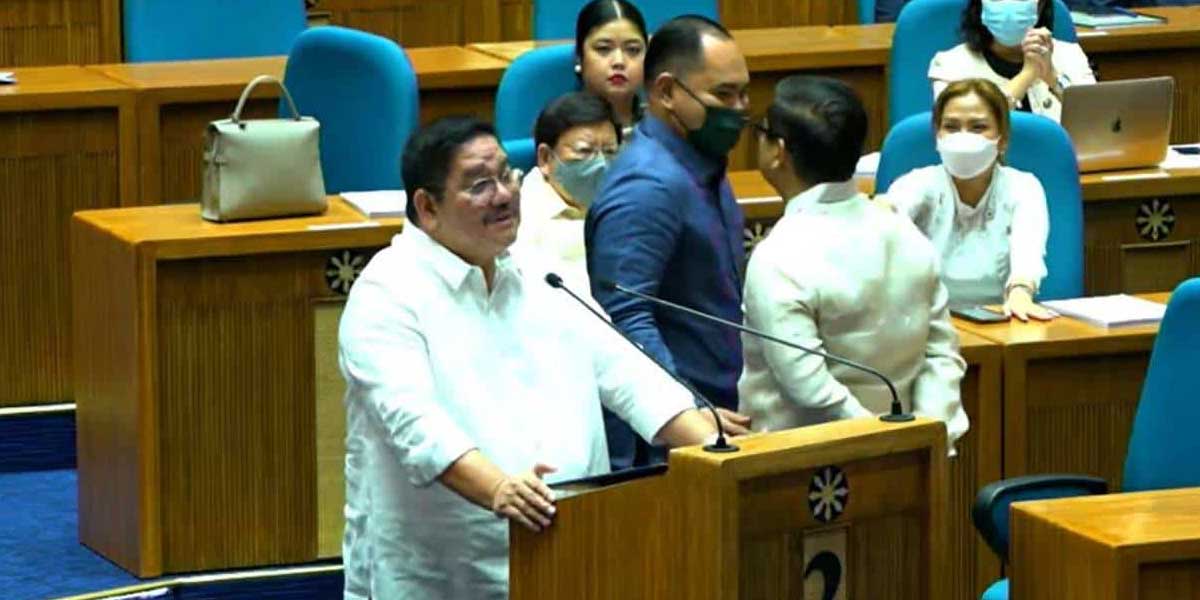
By Elyssa Lopez
Philippine Center for Investigative Journalism
Last of two parts
The National Grid Corporation of the Philippines, a monopoly in the transmission industry, is a bottleneck in the growth of green energy.
Imagine the power grid as a road system. Transmission lines are like expressways that carry electric energy for long distances across the country. Electricity then gets passed onto the distribution system, similar to roads and streets leading to homes and businesses.
But before a new energy source can be added to this network, a developer must apply for a system impact study (SIS) to find out how adding that facility will affect the grid. It’s like trying to connect an on-ramp to an expressway. The National Grid Corporation of the Philippines (NGCP), the company that won the 50-year franchise to operate, maintain, and expand the country’s transmission network, has to conduct that study to make sure that the highway can accommodate a new on-ramp without causing traffic pileup.
Today the number of those projects waiting to be checked by the NGCP has accumulated. As of September 2022, the Department of Energy (DOE) had already issued clearances for 82 projects to proceed to the SIS stage. At least five renewable energy developers interviewed by PCIJ said the NGCP was suffering from a huge backlog, and that more than 160 projects were still waiting for their studies.
“The NGCP said it would take them 12 to 15 months to finish the backlogs. That would result (in) massive delays for several projects,” one renewable energy developer said.
Frustrations with the NGCP go beyond the study backlog. For years, the company wasunder stern scrutiny due to the delay in its interconnection projects. The pandemic has affected many if not all government projects, but the holdup with the NGCP has been incredibly long even prior to Covid-19.
Money does not seem to be the issue as well. A PCIJ analysis of financial statements from 2009 to 2021 found that the company had been realizing a gross profit margin of at least 64% on average per year. Its net income grew steadily from P15 billion in 2009 to P23 billion in 2021.
Still, stakeholders see it as a bottleneck in the adoption of clean energy throughout the archipelago. If the NGCP doesn’t get its act together, the grid will never be ready for this shift.
Major grid project delayed
A stark example of a delayed NGCP project is the Mindanao-Visayas Interconnection Project (MVIP). Discussions on the MVIP started as early as 2013. Until today, the project remains unfinished.
“They said it will come online by mid-next year,” said Mylene Capongcol, director of the Renewable Energy Management Bureau (REMB).
The project is critical to ensuring sufficient and cheaper energy supply not just in the Visayas, but in the whole country, as it will connect the Mindanao grid to the Visayas grid with a high-voltage direct current system. This can initially allow as much as 450 megawatts of energy to transmit from Mindanao, which as of the end of 2021, sources a third of its power from renewable energy sources.
“The implication of the completion of the MVIP is not just reliability of power, but sufficiency of power supply,” former socioeconomic planning undersecretary Adoracion Navarro said. “It will ensure that any surplus in the region can be used nationwide.”
In a policy paper published in 2022, Navarro underscored that delays in transmission projects could have “anti-competition effects.”
“When transmission is congested, power participants can exercise market power, meaning, a power generator with multiple power plants, for example, can withhold the power capacity for one power generation unit to kick in higher bid prices, which can benefit another power generation unit of its own,” she said.
The ERC approved the construction of MVIP in 2017 with the NGCP initially targeting completion by December 2020. In previous interviews, NGCP reasoned that the pandemic delayed the completion of the project.
The concession agreement that the NGCP had signed with the National Transmission Corp. (TransCo), the state entity that owns the transmission assets, also includes a commitment to complete 42 transmission projects.
The 2008 agreement stipulated required completion dates, the latest of which was way back in December 2010. The NGCP managed to complete all 42 projects on Jan. 31, 2021, as shown in its 2021 financial statement.
In an August 2021 statement, the NGCP passed the blame on the project delays to the DOE, saying it had sought “assistance to (sic) issues on permitting and right-of-way concerns.” The company said these factors were the major causes of delays in transmission projects.
PCIJ has tried to get an interview with NGCP since January 2023, but has not received a response as of writing. Questions were sent via email as well.
Hefty profits
The NGCP is benefitting from hefty profits at its current operational capacity, said Albert Dalusung III, adviser for the local think-tank Institute for Climate and Sustainable Cities.
“NGCP will benefit from having these new connections themselves. Their revenue is based on assets in place. So the more assets in place, the more revenue. But you know, the last time kasi I looked at the NGCP financials, in just a few years, paid off na ‘yung investment nila,” he said. “They’re already making so much money, right now.”
In 2008, NGCP, a consortium composed of State Grid Corp. of China (40%), Monte Oro Grid Corp. (30%), and Calaca High Power Corp. (30%) won the competitive bid of TransCo to operate and manage its transmission lines.
Monte Oro was previously controlled by billionaire Enrique Razon. In 2010, Henry Sy Jr.-led OneTaipan bought Razon’s shares in the firm for $350 million, making him the owner of Monte Oro. Sy also serves as vice chairman of SM Investments Corp., the holding company of the Sy family that owns retail, banking, and property assets.
Meanwhile, Calaca High Power Corp. lists Prudential Insurance owner Robert Coyiuto Jr. as chairman. Coyiuto is also a director of Petrogen Insurance Corp., the insurance arm of oil refining firm Petron Corp.
In 2009, the NGCP was granted a 50-year congressional franchise to operate and manage the country’s grid, with an initial 25-year concession agreement. According to the agreement, the NGCP will be up for review in the 25th year of operations, or by 2029. In 2034, the agreement will be subject to the mutual consent of both parties, which will determine if the agreement is still mutually beneficial.
Under the deal, the NGCP must pay $3.95 billion to the Philippine government for the concession. A quarter of the amount must be paid immediately, while 75% may be paid in semi-annual installments.
The company paid $987.5 million in January 2009 as an initial payment to the government for the concession. To cover the rest of the bill, $2.96 billion, NGCP secured a deal that converted the amount at a fixed rate of P42.65 per dollar, or P160.3 billion, to be paid in 40 semi-annual installments.
A 2021 report by Financial Futures Center, an NGO focused on renewable energy development in developing countries, found that by the fourth year of NGCP’s operations, it had managed to recoup its initial payment of $987.5 million.
By 2015, it had managed to recover half of the cost of acquiring the grid’s concession rights, or about P130 billion.
Based on PCIJ’s separate analysis, NGCP’s shareholders had fully recouped their entire investment of $3.95 billion, and more, in 2020. By 2021, it was already making bank.
“They [NGCP] got the [concession] deal at a discount. But there are still many complaints in their performance, so they should be really reviewed,” Navarro said.
Connected grid may lower electric bill
NGCP’s financial statements also showed that the company started to significantly increase capital expenditures when it had fully recovered its concession payments.
In 2020, the company recorded its highest “investment in capital expenditure” at P41.1 billion. The company’s financial statements showed that the amount covered “costs of assets under construction” and other items. At that time, Sen. Risa Hontiveros called for a probe into the company’s operations due to national security concerns.
From 2009 to 2021, the company kept gross profit margins of at least 64%. This was higher than the average margins maintained by regional electricity distributors in the UK at 42.25%, which have monopolized their respective areas. The company’s net income meanwhile grew steadily from P15 billion in 2009 to P23 billion in 2021.
NGCP’s financial statements:

For Majah-Leah Ravago, economist and author of “Powering the Philippine Economy,” a book that extensively discussed the energy sector, the figures showed that the concessionaire was “maximizing its investment.”
“This is a natural monopoly… and there are talks that it’s possible ‘yung bukol sa transmission costs nanggagaling sa (the bulk of transmission costs came from) large margins,” she said.
In her 2023 working paper titled “The Nature and Causes of High Philippine Electricity Price and Potential Remedies,” Ravago found that at least 9% of the country’s electricity rate came from transmission costs. But the transmission operation also has an impact on the cost of power generation, which makes up 54% of the country’s electricity rate.
“Because of lack of interconnection, when there’s oversupply from the Visayas, [the grid] cannot send it to the Luzon grid. Since the Luzon grid has a shortage, distribution utilities are forced to tap power in the WESM, which can be expensive since it responds to the supply and demand,” she said.
“Or within Visayas, when there is transmission congestion, it creates artificial scarcity forcing the areas with shortage to source power from more expensive generators, such as diesel power,” she added.
RE stakeholders are aware of the critical role played by the NGCP in the adoption of clean energy in the country.
“While NGCP is not at fault for the decrease in the countryʼs total RE generation, the grid operator has the power to make it easier for renewable energy technologies to infiltrate the grid,” read the Financial Futures Center report.
Ravago also stressed the key role of the NGCP in the country’s energy transition. “If we can’t do a concomitant modernization and investment on transmission infrastructure, potential investments on RE will just go to waste. That will just become stranded power,” she said.
For Dalusung, a review of the NGCP’s franchise was warranted.
“The problem is certainly not the incentive to modernize, they will get more money, more revenue by doing it. But they are not. So there must be some issue that I think government oversight bodies should look at,” he said.
Navarro echoed the sentiment and called on the government to start the assessment of the NGCP’s performance ahead of 2029, or the year its concession agreement would be up for review.
“This [financial performance] shows it is a profitable venture, and the concessionaire is earning a lot. It has the money to invest. But why are the covenants in the concession agreement not being delivered?” Navarro asked. “[That’s why] it’s important to have a continuous review of the concession agreement. The DOE, TransCo, and the regulator… should provide assessments now. They owe it to the public.”
The NGCP is already under audit by the ERC following a Senate hearing on cybersecurity concerns in 2020. The 18th Congress funded the ERC to allow it to conduct five audits on the NGCP in the following areas: assets, performance, compliance with Philippine laws, cybersecurity, and the weighted average cost of capital (WACC), or the return that the company gets for the capital it had invested on the grid.
ERC Chair Monalisa Dimalanta said all the audits would be completed by the end of 2022.
“All those audits would be used [to inform us] for the reset [of the transmission rates],” she said in an interview with PCIJ in December.
All eyes on the NGCP regulator
In September, the Dimalanta-led ERC signed Resolution No. 8, triggering the review of the NGCP’s transmission wheeling rates, the amount charged by the company to consumers for the use of its facilities. The review is for the fourth and fifth regulatory periods.
The NGCP is supposed to undergo five-year regulatory reviews during its concession. The fourth regulatory period, covering Jan. 1, 2016 to Dec. 31 2022, had been delayed for years, as public consultations began as early as 2014.
This delay in regulatory reviews provided NGCP with an “interim maximum annual revenue” from 2016 to 2022, as the WACC was unchanged at 15% since 2010. But Dimalanta believes the rate for the fourth regulatory period should be lower.
A 2018 study by TransCo showed that the WACC of the NGCP for the fourth regulatory period should only be at 6.4%.
“The building blocks of every regulatory period are a reflection of the economic conditions at the time of the reset, and for 2016 to 2022, we had better economic conditions [compared with the previous regulatory period],” she said in the interview with PCIJ in December.
The ERC chair also pointed out that for the most part of 2016 to 2022, there were “fewer risks” for investors, as compared with the third regulatory period of 2010 to 2015, which saw the world recovering from the 2008 global financial crisis.
Dimalanta said the ERC would also consider the performance of the company in the implementation of NGCP’s committed transmission projects in deciding on wheeling rates.
Under Resolution No. 8, the ERC has the power to either reward or penalize the regulated entity, the NGCP, given its “target level of performance.”
Pressure on NGCP to deliver on its mandate is high because in many countries transmission lines that previously worked with baseload power sources needed to be upgraded to take on the variable nature of renewable energy sources like solar and wind.
All eyes are now on the ERC to take on its regulatory hat more firmly on the lone ranger in the energy transmission industry.
Dalusung, who had worked with Dimalanta in the National Renewable Energy Board, said he had high hopes the review would be beneficial to the public.
“If it’s Mona overseeing the process, I’m optimistic,” he said. –With research by Martha Teodoro, PCIJ, March 2023



















